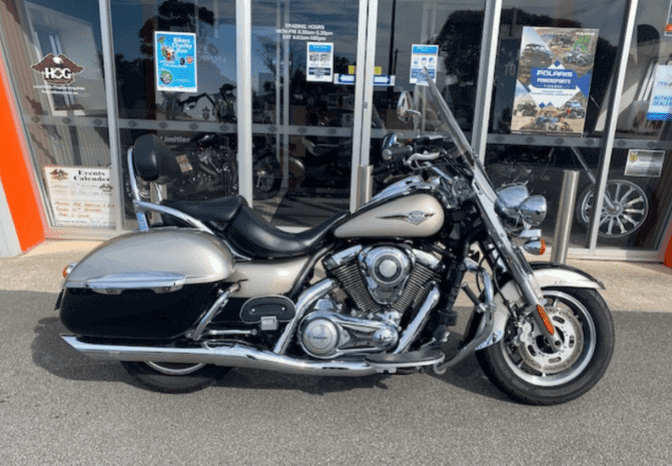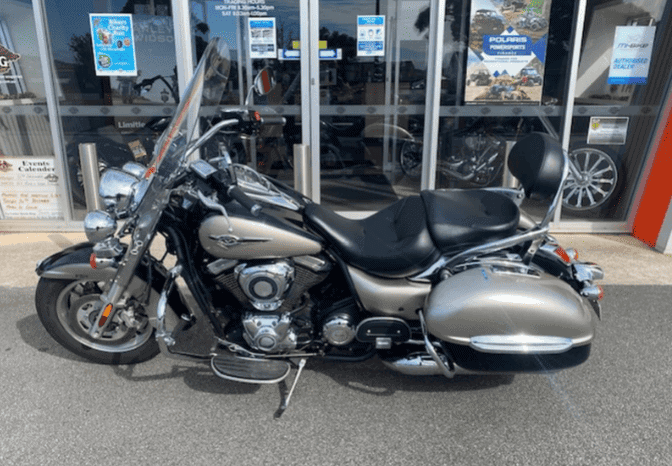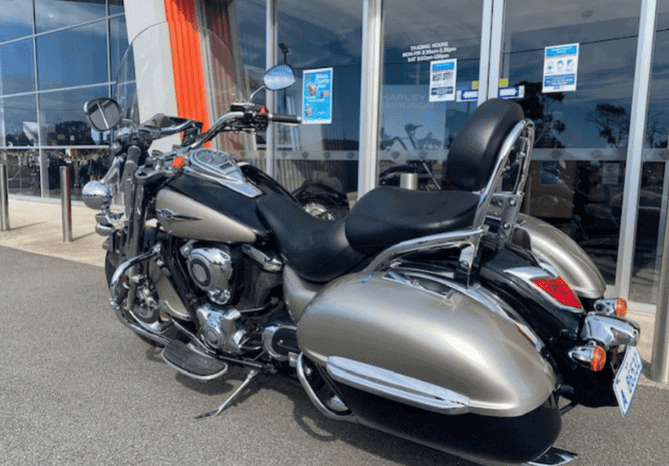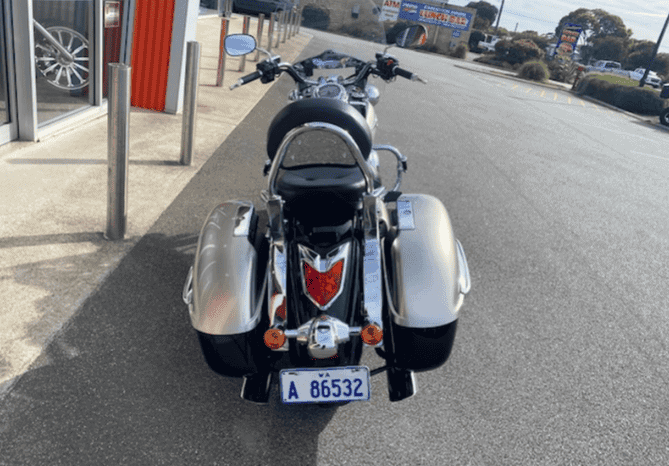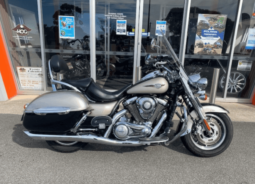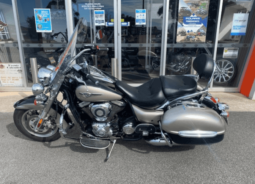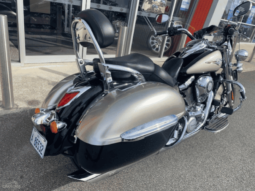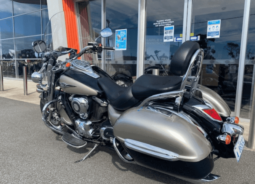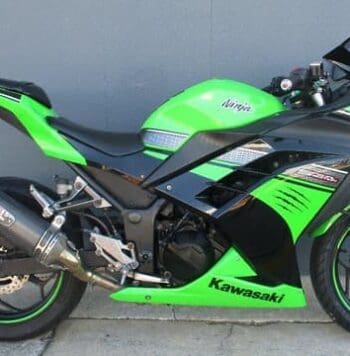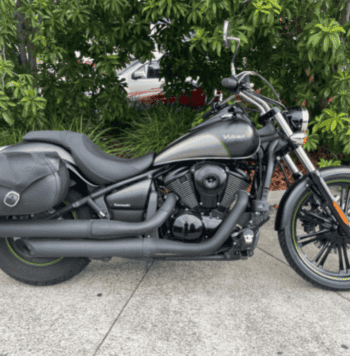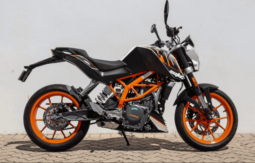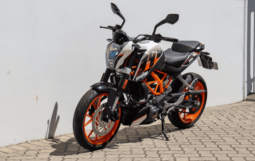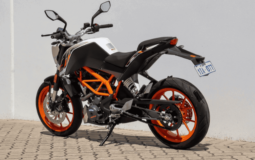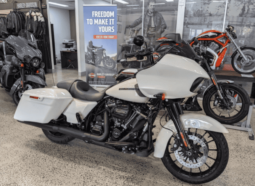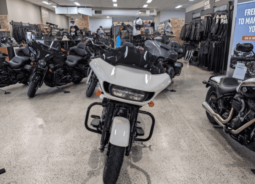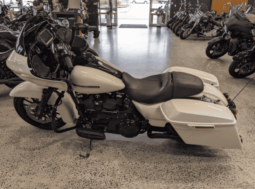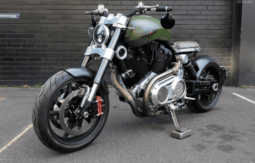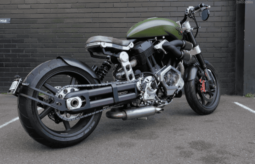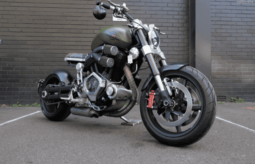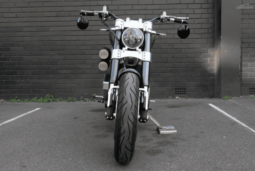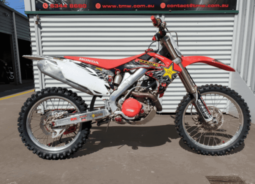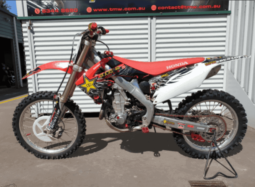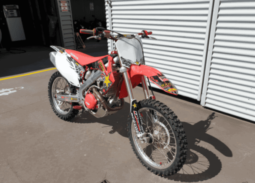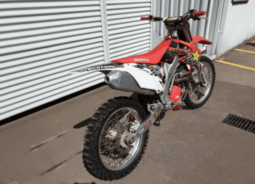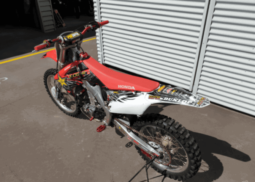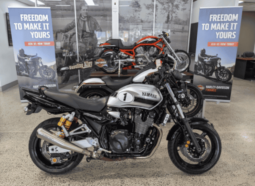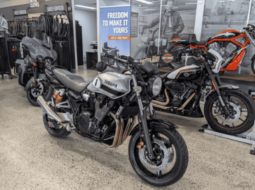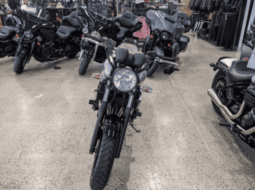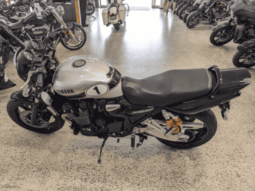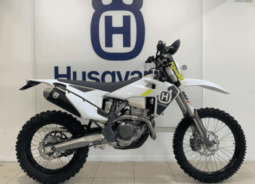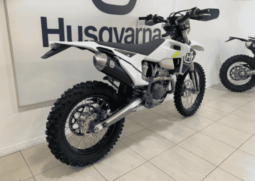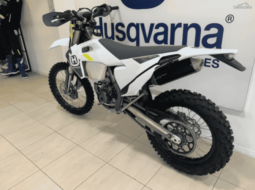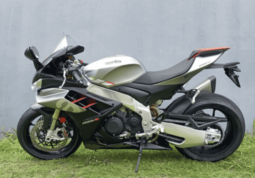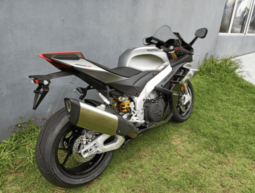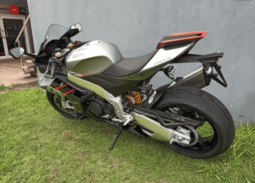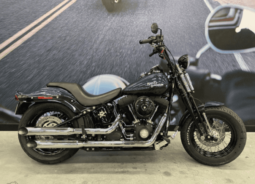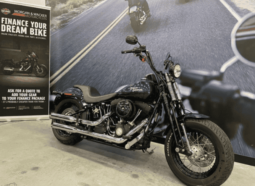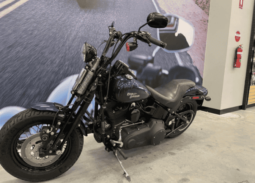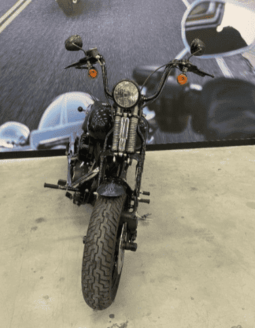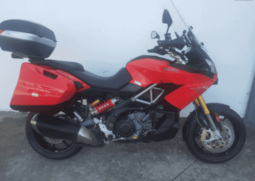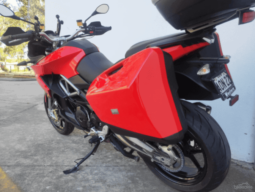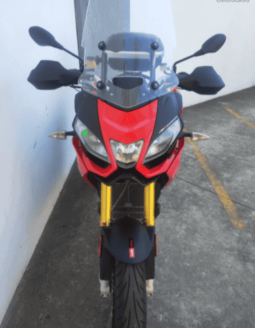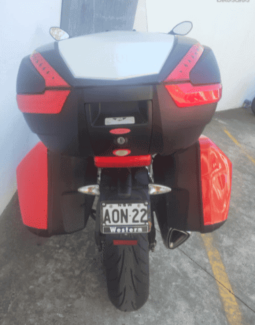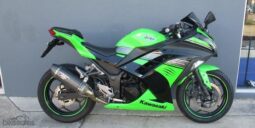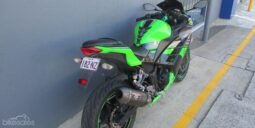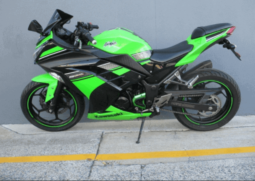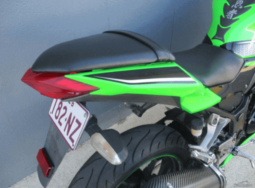2010 Kawasaki Vulcan 1700
At Kawasaki, we don’t believe classic looks and high technology need to be mutually exclusive. As a matter of fact, just the opposite. Witness Exhibit A: The Kawasaki Vulcan® 1700 Classic combines things like the latest electronic throttle technology feeding a visceral overhead-cam V-twin, with a dose of old-fashioned cruiser simplicity that lets the rider focus on the experience and not the machine, mile after reliable mile.
WHAT ARE YOU WAITING FOR ? MAKE TODAY THE DAY!!! Affording your motorcycle has never been easier. One of our friendly trained staff can tailor your Finance and Insurance requirements to suit your needs. Australia wide freight no problem's- ask us for a quote today. Contact the only authorised Yamaha Dealer in the Great Southern to start living your dream today.
DL15186
The Vulcan 1700 Classic V-twin uses a single overhead cam in each cylinder head, rather than a push-rod overhead-valve arrangement, to boost efficiency and provide quick acceleration and superior passing performance. The engine’s long-stroke design, high compression and large displacement produce massive amounts of quick-revving torque, all of it delivered with a distinct V-twin character.
Kawasaki’s fully electronic throttle valve system feeds that big V-twin exactly what it needs. Working with a powerful ECU and the rest of the fuel injection system, the electronic throttle valve enhances response without detracting from its distinctive V-twin feel–delivering ultra-precise intake flow to the engine under nearly any conditions.
The system utilizes an Accelerator Position Sensor (APS) and a Throttle Position Sensor (TPS). Both units feed data to the ECU, which adjusts the throttle plates to tailor intake airflow accordingly. The system offers a natural throttle feel, because the APS is activated by a throttle body pulley that’s connected by cables to the throttle grip. Like the systems in use on the Ninja® 650R and Vulcan 900 motorcycles, the 1700 Classic’s fuel injection uses one sensor in place of the usual three, for less complexity and weight. Besides the obvious FI advantages like improved fuel economy and automatic adjustment for altitude changes, the system also permits easy hands-off warm-up and idle speed control. This cruising-oriented machine features FI and exhaust system tuning optimized to deliver peak torque at a lower rpm—ideal for urban and back road environments.
Mated to this rumbling V-twin, a six-speed transmission with overdriven fifth and sixth gears contributes to relaxed riding and better fuel economy at highway speeds. The Vulcan 1700 Classic transfers torque from the transmission to the rear wheel through a thin and light 28mm carbon fiber final drive belt with 40-percent higher tensile strength than a Kevlar unit of the same width.
Designed to be as light and slim as possible, the Classic’s single backbone double cradle frame offers a short seat-to-steering head distance, with a correspondingly short wheelbase. That easy-reach handlebar facilitates slow-speed maneuvering and helps maximize rider confidence. Adding to the light and easy handling are suspension components that match the Vulcan 1700 Classic’s intended usage. An elegantly simple rear swingarm with twin air-assisted shocks provides 3.1 inches of rear suspension travel, and features air spring preload and four-way rebound adjustment. Up front, a large 43mm fork offers precise steering feedback and 5.5 inches of travel.
The Vulcan 1700 Classic rolls on nine-spoke cast wheels, which run fat, tubeless tires to complement its muscular styling. A 130/90 front radial and 170/70 rear are mounted on those attractive wheels. Dual 300mm front disc brakes with twin-piston calipers, and a single 300mm rear disc brake with a two-piston caliper help bring this stylish machine to steady, powerful stops.
Though it’s packed with technological innovations, the Vulcan 1700 Classic remains a warm, organic machine built for the masses, with all the character, charm and visual appeal riders expect from a Kawasaki V-twin. This rolling showcase of classic cruiser styling not only looks good from any angle, but its elegant form is just as pleasing to the touch as it is to the eye.
Authentic Kawasaki Accessories are available through Kawasaki dealers.
Features and Benefits:
New for 2010:
– Improved exhaust pipe heat shielding reduces radiant heat felt by the rider
– Improved radiator ducting helps keep heat away from the rider’s right leg
– A 5mm shorter coolant pipe makes it possible to remove the pipe without removing the alternator cover, simplifying oil-screen maintenance
– New, two-tone color combination
Powerful 1700cc V-Twin engine
– Liquid cooled, 4-valve per cylinder, fuel-injected 1700cc 52? V-twin engine
– Long-stroke 102 x 104mm bore and stroke helps deliver massive torque, distinctive V-twin feel
– Valve system uses a single overhead cam arrangement instead of pushrods, for quick revability and enhanced mid-high rpm power
– Semi-dry sump allows low crankshaft placement and long stroke without increasing engine height
– Single-pin crank accentuates the engine’s V-twin character by providing strong power-pulses
– Large capacity airbox is located on both sides of the engine
– Small-diameter iridium sparkplugs reach deep into the combustion chamber for high combustion efficiency, especially during low-load operation
– Dual staggered mufflers offer a rich sound and stylish appearance
– Engine tuning offers superior acceleration in the 50-70mph range
– Even in overdrive, the engine pulls strongly, facilitating overtaking at highway speeds
Fuel Injection
– The Vulcan 1700 takes advantage of FI and exhaust tuning optimized for maximum performance in the low-mid-rpm range, giving it plenty of grunt on the boulevard
– Utilizes one sensor in place of the usual three, for simplicity and light weight
– Based on the systems used by the Ninja 650R and Vulcan 900 motorcycles
Electronic Throttle Valve System
– Fully electronic throttle actuation system enables the ECU to control the volume of intake air (via throttle valve angle) and fuel (via fuel injector timing) delivered to the engine
– Optimized fuel injector timing and throttle valve position results in accurate, powerful engine response
– Control of both fuel injection and airflow provides easy starting and precise cold-engine idle speed control
– From the rider’s perspective, the ETV works like a standard cable-operated throttle – the throttle grip is still connected to cables, so the feel at the grip is the same
– Twisting the throttle turns a pulley on the throttle body which triggers the Accelerator Position Sensor (APS) to send a signal to the ECU, which then modulates the throttle valves via a DC motor
– Accurate throttle position is relayed to the ECU by a Throttle Position Sensor (TPS)
– APS and TPS send two sets of signals to the ECU for system redundancy in the unlikely event of a sensor failure
On Board Diagnostics
– Diagnostic system allows self testing of the electronic systems on the Vulcan 1700
– Displays codes on the instrumentation, which can be read by owner from the accessory manual
Six-Speed Transmission / Final Drive
– 5th and 6th gear are overdrive gears, contributing to stress-free riding and better fuel economy when cruising at highway speeds
– 28mm carbon fiber final drive belt offers a 40 percent increase in tensile strength compared to current Kevlar belts. This allows the Vulcan 1700 to use a slim belt, only 2mm wider than the Kevlar belt on the Vulcan 900
– Belt drive system is quiet, efficient and offers reduced maintenance compared to a chain
Light Handling Chassis
– Compact frame features a shorter wheelbase, and short distance between the seat and steering head, for an ideal ergonomic layout and easy maneuverability
– Light and as slim as possible, the frame minimizes the number of forged parts and trims any unnecessary metal. The only forged parts are areas that require additional strength – the down-tube joint, engine brackets, side-stand bracket, and rear fender/shock absorber bracket
– The compact design contributes to light handling and facilitates maneuverability at low speeds, especially when executing precise slow-speed maneuvers like parking or making U-turns
43mm Telescopic Fork
– Provides superb steering feedback
– 5.5 inches of travel for excellent ride quality
Dual Adjustable Rear Air-Shocks
– Air adjustable spring preload can be tuned to match varying rider and passenger loads
– 4-way rebound damping adjustments help the shocks compensate for changes in spring pressure
– Chromed shock covers contribute to the bike’s luxurious finish
9-Spoke Cast Wheels
– Allow the use of tubeless tires and complement the Vulcan 1700’s muscular styling
– 130/90 front and 170/70 rear radial tires
– Tire choice and suspension settings selected to augment the chassis’ light handling characteristics
Brakes
– Dual 300mm front and a single 300mm rear disc are squeezed by twin-piston calipers. This braking system is tuned to provide sure, powerful stops
Classic V-twin Appeal
– The line created by the top of the airbox and the cylinder heads forms a curved shape that continues to flow through the bike
– Deeply chromed engine covers have curved upper surfaces. Their three-dimensional form adds volume and gives a high quality appearance
– The edges of the cooling fins receive a special NC treatment that makes them gleam in sunlight
– All the non-chromed parts of the engine have a matte black finish that further accentuates the gleaming chrome
Bodywork
– The fuel tank’s hand-sculpted contours employ a constantly varying radius, giving the bike a dynamic flowing style which is pleasing both to the eye and to the touch
– Its lines flowing through the rest of the bike, the elegantly shaped fuel tank contributes to the Vulcan 1700’s curvaceous figure
– LED taillight looks elegant and provides years of trouble-free service
Instrumentation
– Ignition switch allows on-position key removal; preventing key bunches from scratching the instrument cluster or tank while the bike is in operation
– Turning the ignition switch collar to the "OFF" position turns the engine off and necessitates re-insertion of the key to restart
– Multi-function LCD displays on the tank-mounted instrument cluster are controlled by switches on the right handlebar. Features include a gear position indicator, fuel gauge, clock, odometer, dual trip meters, remaining mileage range and average fuel consumption
– Liberal use of chrome on the engine, fender brackets, light stays, and rear shock covers contrast nicely with the bodywork’s deep, lustrous paint
– The sculpted shape of the seat complements the rich visual tone of the bodywork
2010 Kawasaki Vulcan 1700 Classic Technology
Overview
Engine
Newly designed engine is tuned to two performance variations. Both variations (one for touring, one for cruising) offer both significant torque and power gains over their predecessors, as well as superior passing performance. All models feature Kawasaki’s first fully electronic throttle valve system, which together with the fuel injection system offers smooth, natural engine response. Another change from the previous series is the new 6-speed transmission featuring an overdrive gear.
Powerful 1700cc V-Twin engine
Long-stroke, liquid cooled, SOHC, 8-valve 1,700 cc V-Twin engine was designed to deliver high levels of torque. Bore and stroke measure 102 x 104 mm. Torque is approximately 15% greater than that of the VN1600D.
Valve system uses a SOHC arrangement instead of OHV for more direct engine feel and easier merging onto freeways.
Large capacity airboxes are located on either side of the engine.
Semi-dry sump (like that on the VN2000) allowed the crankshaft to be lowered, enabling a longer stroke without increasing engine height.
Both pistons are connected to a single crankpin. Primary balance is satisfied care of two counter-balance shafts.
Small-diameter iridium spark plugs reach deep into the combustion chamber for high combustion efficiency, especially at low-load operation (near idling).
Belt final drive is quiet and efficient and helps reduce maintenance chores. Using carbon fibre instead of Kevlar as a tensile material, the belt offers high strength (tensile strength is increased by 40%) with a slim size and light weight. Belt width (28 mm) is more comparable to that of the VN900 models (26 mm) than that of the VN2000 (40 mm).
Engine tuning variations
Two series of engines were designed for the new VN1700 models: one for the touring-oriented VN1700 Nomad (and VN1700 Voyager), and one for the cruising-oriented VN1700 Classic and VN1700 Classic LT.
The difference was achieved through different FI settings and muffler systems. The result is that peak torque (up about 15% from the VN1600 Nomad) and peak horsepower (up about 20% from the VN1600 Nomad) occur at different rpm: cruising-oriented models are tuned such that peak performance occurs at lower rpm.
VN1700 Voyager / VN1700 Nomad VN1700 Classic/LT
Max torque @ 2,750 rpm @ 2,250 rpm
Max power @ 5,000 rpm @ 4,500 rpm
All models feature dual mufflers with the same base construction as those on the VN2000. However, the VN1700 Nomad (like the VN1700 Voyager) features twin mufflers (one on each side), where the VN1700 Classic and VN1700 Classic LT feature dual mufflers on the right side of the bike.
The clutch on the VN1700 Nomad and VN1700 Voyager models features six damping springs for 3-stage progressive damping that contributes to smoother feeling when getting back on the gas.
Superior passing performance
Engine tuning offers superior acceleration in the 80-113 km/h (50-70 mph) range. Even in overdrive, the engine pulls strongly in this speed range, facilitating overtaking at highway speeds.

